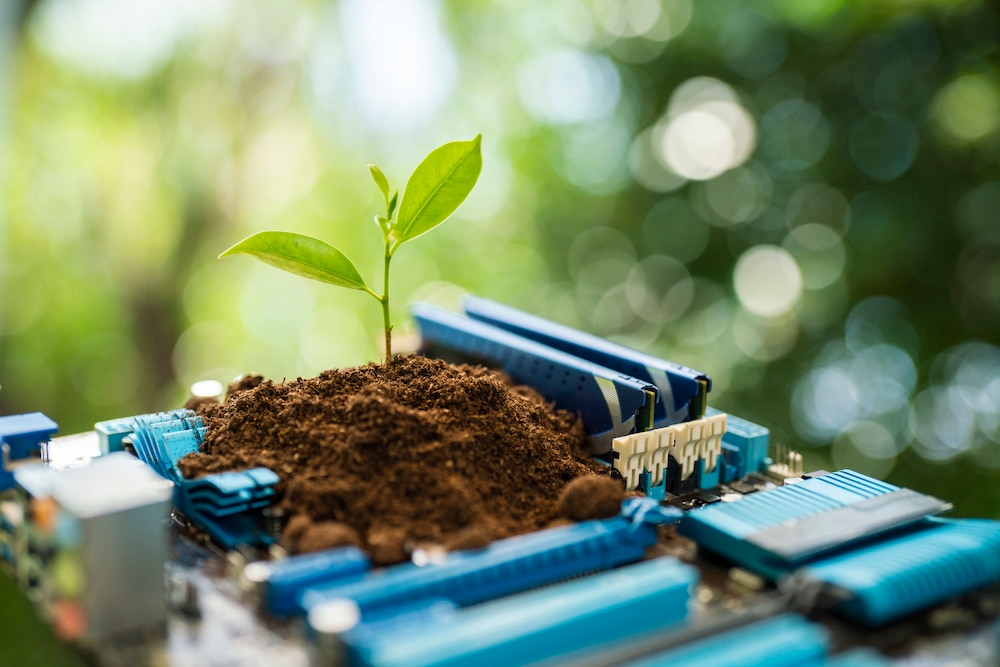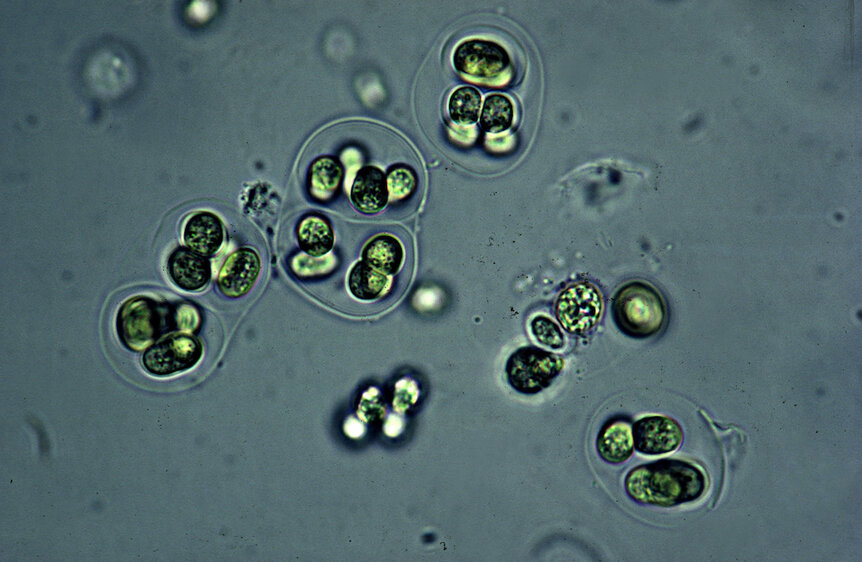Create a free profile to get unlimited access to exclusive videos, sweepstakes, and more!
A plant battery powered this computer for a year with photosynthesis
Algae powers the planet's food chain, now it's powering electronics.

There are a lot of boxes which need to be ticked in order for something to be considered alive. Generally speaking, it needs to be able to sense and interact with the environment, reproduce, and generate its own energy through environmental resources. There are other criteria, of course, but those are the broad strokes.
While we’ve built some pretty impressive machines, they rarely check even one of those boxes, let alone all of them. Advances in robotics have granted some sensation — like touch and taste — to a lucky few machines, and certainly a suitably advanced piece of clockwork could make a copy of itself, given enough time and the right programming. Still, our machines are dependent on external power supplies which we grant them, either via chemical batteries or the electrical grid. That wasn’t the case, however, for the alien Fix-Its in the 1987 film *batteries not included. While those pocket-sized extraterrestrials were made of metal and machinery, and even seemed cobbled together from spare parts, it’s difficult to argue that they weren’t alive.
Now, scientists from the University of Cambridge, in partnership with the microprocessor manufacturer Arm, have taken another step toward building self-sustaining machines capable of generating their own power without the need for traditional batteries or any connection to the grid. Their research, published in the journal Energy & Environmental Science, brings us a little bit closer to building Fix-Its of our own.
The device, built out of metal and clear plastic and about the size of a single AA battery, was filled with a non-toxic blue-green algae known as cyanobacteria. The algae uses photosynthesis to generate food stores and it’s that reaction which was harnessed to power an Arm Cortex M0+ microprocessor.
The device was placed on a windowsill in the home of one of the researchers for a period of months where it gathered the ambient sunlight through the window. Cyanobacteria only capture about a quarter of a percent of the sunlight they’re exposed to, making this a relatively low efficiency power generation process, but it was enough to keep the processor going. During its operational period, the processor spent 45 minutes of each hour doing computational work and spent the remaining 15 minutes on standby.
Impressively, the plant power source has been running continuously for more than a year and it's still going strong. All told, the algae produced about 0.3 microwatts per hour. For comparison, you’d need 20 to 30 of them to sustain a typical LED lightbulb. While the power generation isn’t yet suitable for running most everyday electronics, the researchers think it might be perfect for juicing up the growing Internet of Things. In fact, the Arm Cortex M0+ is a common microprocessor used in connected devices. If successful, plant power sources could supplement or replace lithium-ion batteries in a segment of devices. Researchers also believe it could be useful in remote locations where electrical infrastructure isn’t available and small amounts of power might be useful.
Perhaps most impressive is the complete lack of maintenance needed to keep the algae going. Unlike even houseplants which need constant attention to keep them happy, the algae are content to continuously generate electricity as long as they’re provided with a watery environment and intermittent sunlight. Researchers didn’t need to feed the algae and they even produced electricity when the Sun was down, unlike solar panels which are more efficient but notoriously finicky in low light or total darkness. The team believes the algae store some of their food for processing overnight, which keeps the reaction going even in the dark.
Researchers hope to scale the system up either by stacking thousands of algae cells together — something which could be easily achieved as all of the materials are readily available, inexpensive, and recyclable — or by making their energy production more efficient.
Alternative energy sources are sorely needed due to the limited availability of fossil fuels and the materials for lithium-ion cells. If this works out, the future of our electronics could be powered by plants, batteries not included. Or needed.



























